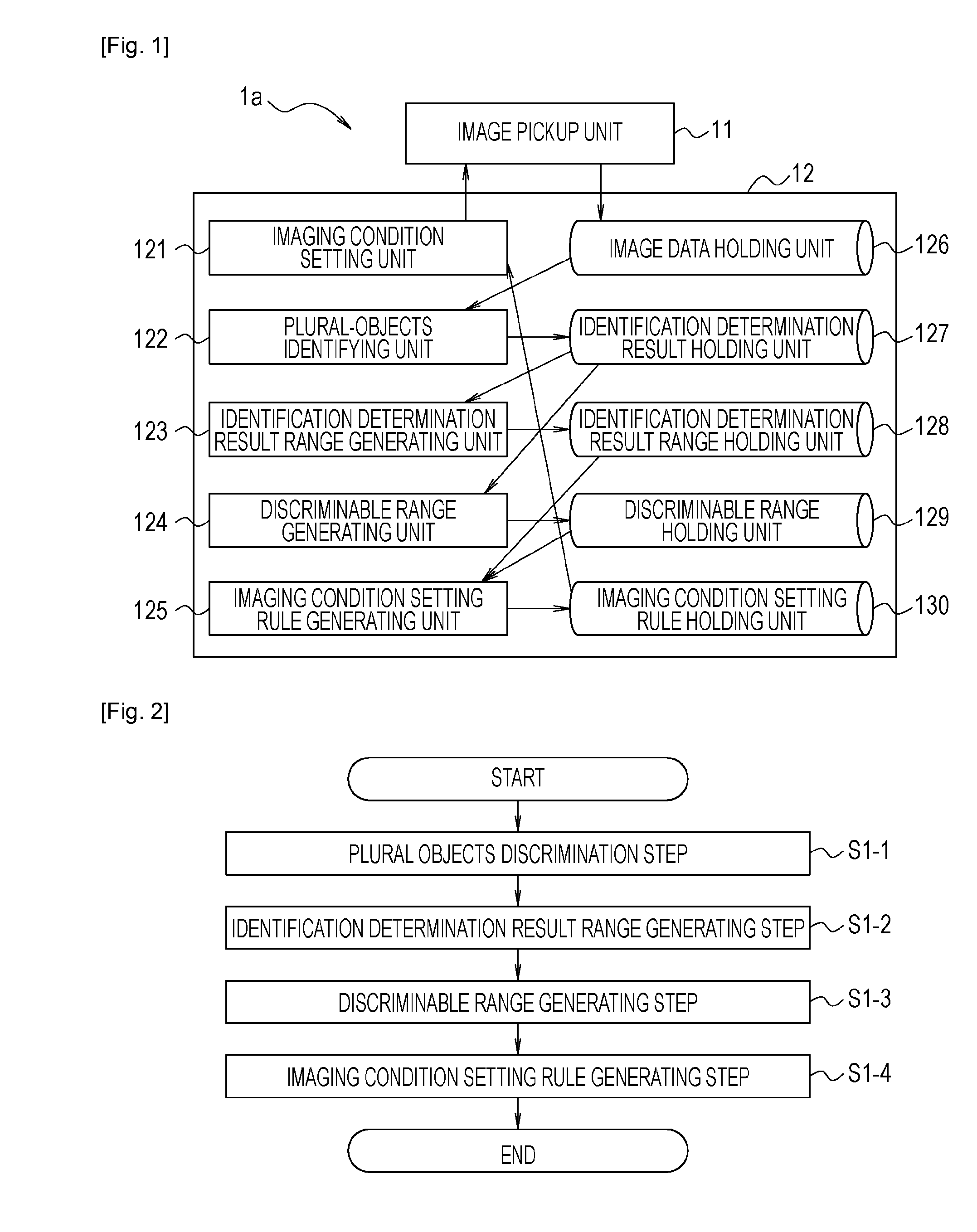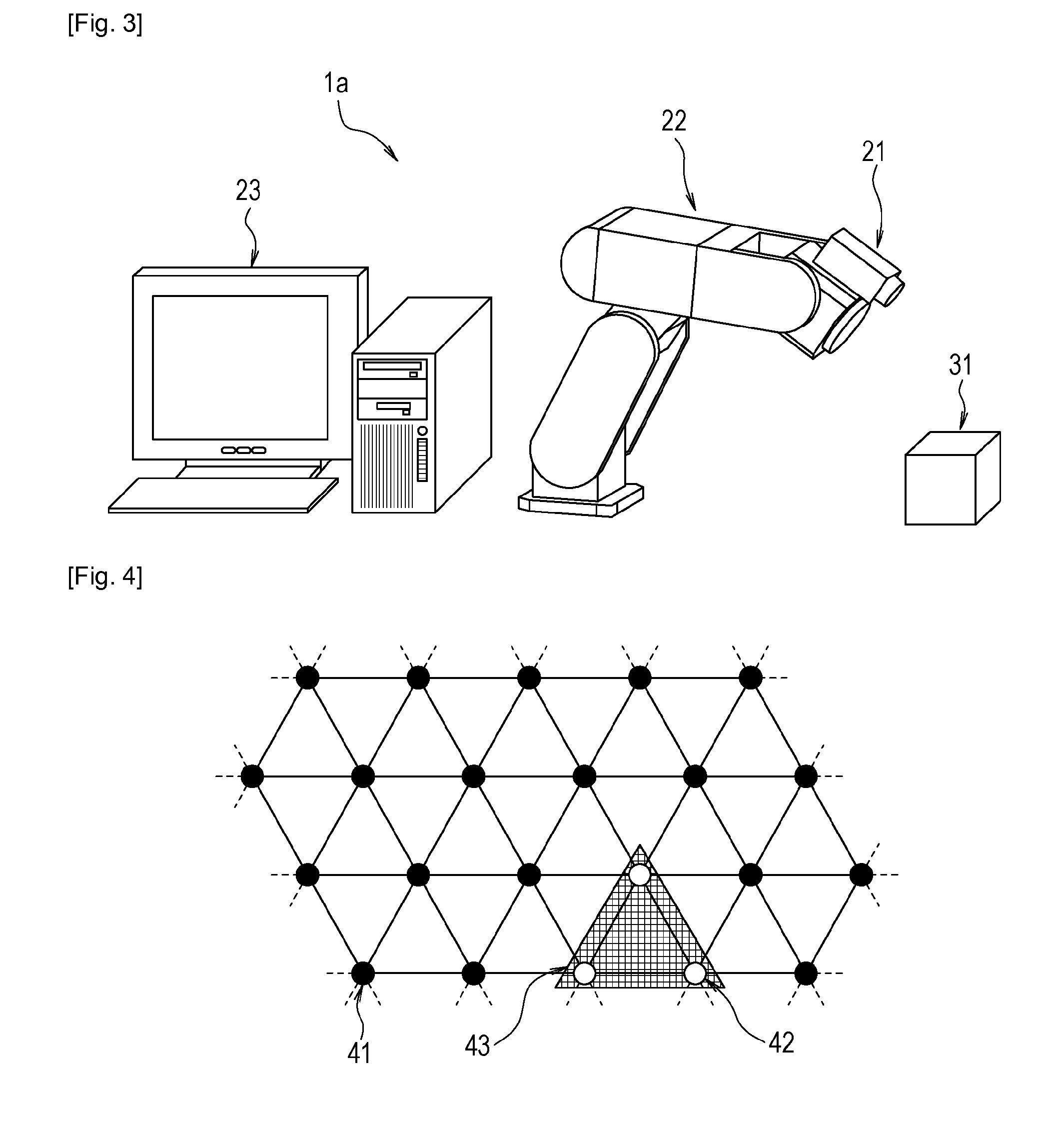Imaging apparatus and imaging condition setting method and program
- Summary
- Abstract
- Description
- Claims
- Application Information
AI Technical Summary
Benefits of technology
Problems solved by technology
Method used
Image
Examples
first embodiment
[0029]A first embodiment of the present invention will be described in detail with reference to drawings. The first embodiment of the present invention may discriminate objects which may have similar appearances from a plurality of directions that are mutually different. FIG. 1 is a block diagram illustrating an entire configuration of an imaging apparatus of a first embodiment of the present invention or an image pickup system 1a of the first embodiment (hereinafter called a “first imaging apparatus”1a).
[0030]As illustrated in FIG. 1, the first imaging apparatus 1a includes an image pickup unit 11 which may image an object and generate image data and a calculating unit 12 which may perform various types of calculation. The calculating unit 12 has an imaging condition setting unit 121, a plural-objects discriminating unit 122, an identification determination result range generating unit 123, a predetermined generating unit, and a predetermined holding unit. The predetermined generat...
second embodiment
[0053]Next, a second embodiment of the present invention will be described. A second embodiment of the present invention discriminates mutually different objects having similar appearances. Differences from the first embodiment of the present invention will be described mainly, and the description of some common matters to the first embodiment of the present invention will be omitted. The same configuration as that of the first imaging apparatus is applicable (see FIG. 1) to an imaging apparatus of the second embodiment of the present invention or an image pickup system (hereinafter called a “second imaging apparatus”) according to the second embodiment. A specific configuration of the second imaging apparatus may also be the same as that of the first imaging apparatus (see FIG. 3).
[0054]FIG. 8 is a flowchart illustrating a processing flow of an imaging condition setting method and program of the second embodiment of the present invention. The processing flow of the imaging conditio...
third embodiment
[0064]Next, a third embodiment of the present invention will be described. The third embodiment of the present invention uses an illumination which radiates light to an object. The entire configuration of an imaging apparatus of the third embodiment of the present invention or an image pickup system 1c of the third embodiment of the present invention (hereinafter called a “third imaging apparatus”1c) may apply the same configuration as that of the first imaging apparatus 1a (see FIG. 1). The processing flow for generating an imaging condition setting rule according to the third embodiment of the present invention may apply the processing flow illustrated in FIG. 2. However, the specific configuration of the third imaging apparatus 1c and the specific steps of the processing flow for generating an imaging condition setting rule according to the third embodiment of the present invention are different from the first embodiment. Differences from the first embodiment of the present inven...
PUM
 Login to View More
Login to View More Abstract
Description
Claims
Application Information
 Login to View More
Login to View More - R&D
- Intellectual Property
- Life Sciences
- Materials
- Tech Scout
- Unparalleled Data Quality
- Higher Quality Content
- 60% Fewer Hallucinations
Browse by: Latest US Patents, China's latest patents, Technical Efficacy Thesaurus, Application Domain, Technology Topic, Popular Technical Reports.
© 2025 PatSnap. All rights reserved.Legal|Privacy policy|Modern Slavery Act Transparency Statement|Sitemap|About US| Contact US: help@patsnap.com



